Potrebujeme váš súhlas na využitie jednotlivých dát, aby sa vám okrem iného mohli ukazovať informácie týkajúce sa vašich záujmov. Súhlas udelíte kliknutím na tlačidlo „OK“.
ASTM E2683-09
Standard Test Method for Measuring Heat Flux Using Flush-Mounted Insert Temperature-Gradient Gages
Automaticky preložený názov:
Štandardná skúšobná metóda na meranie tepelného toku Použitie pod omietku Vložiť Teplotný gradient zástavy
NORMA vydaná dňa 15.6.2009
Informácie o norme:
Označenie normy: ASTM E2683-09
Poznámka: NEPLATNÁ
Dátum vydania normy: 15.6.2009
Kód tovaru: NS-45867
Počet strán: 8
Približná hmotnosť: 24 g (0.05 libier)
Krajina: Americká technická norma
Kategória: Technické normy ASTM
Kategórie - podobné normy:
Anotácia textu normy ASTM E2683-09 :
Keywords:
heat-flux gage, temperature gradient, thermal transport, ICS Number Code 17.200.10 (Heat. Calorimetry)
Doplňujúce informácie
| Significance and Use | ||
|
The purpose of this test method is to measure the net heat flux to or from a surface location. For measurement of the radiant energy component the emissivity or absorptivity of the surface coating of the gage is required. When measuring the convective energy component the potential physical and thermal disruptions of the surface must be minimized and characterized. Requisite is to consider how the presence of the gage alters the surface heat flux. The desired quantity is usually the heat flux at the surface location without the presence of the gage. Temperature limitations are determined by the gage material properties, the method of mounting the sensing element, and how the lead wires are attached. The range of heat flux that can be measured and the time response are limited by the gage design and construction details. Measurements of a fraction of 1 kW/m2 to above 10 MW/m2 are easily obtained with current gages. With thin film sensors a time response of less than 10 μs is possible, while thicker sensors may have response times on the order of 1 s. It is important to choose the gage style and characteristics to match the range and time response of the required application. When differential thermocouple sensors are operated as specified for one-dimensional heat flux and within the corresponding time response limitations, the voltage output is directly proportional to the heat flux. The sensitivity, however, may be a function of the gage temperature. The measured heat flux is based on one-dimensional analysis with a uniform heat flux over the surface of the gage. Measurements of convective heat flux are particularly sensitive to disturbances of the temperature of the surface. Because the heat-transfer coefficient is also affected by any non-uniformities in the surface temperature, the effect of a small temperature change with location is further amplified as explained by Moffat et al. (2) and Diller (3). Moreover, the smaller the gage surface area, the larger is the effect on the heat transfer coefficient of any surface temperature non-uniformity. Therefore, surface temperature disruptions caused by the gage should be kept much smaller than the surface to environment temperature difference driving the heat flux. This necessitates a good thermal path between the sensor and the surface into which it is mounted. If the gage is not water cooled, a good thermal pathway to the system’s heat sink is important. The gage should have an effective thermal conductivity as great or greater than the surrounding material. It should also have good physical contact insured by a tight fit in the hole and a method to tighten the gage into the surface. An example method used to tighten the gage to the surface material is illustrated in Fig. 2. The gage housing has a flange and a separate tightening nut tapped into the surface material. If the gage is water cooled, the thermal pathway to the plate is less important. The heat transfer to the gage enters the water as the heat sink instead of the surrounding plate. Consequently, the thermal resistance between the gage and plate may even be increased to discourage heat transfer from the plate to the cooling water. Unfortunately, this may also increase the thermal mismatch between the gage and surrounding surface. Fig. 2 shows a heat flux gage mounted into a plate with the surface temperature of the gage of Ts and the surface temperature of the surrounding plate of Tp. As previously discussed, a difference in temperature between the gage and plate may also increase the local heat transfer coefficient over the gage. This amplifies the measurement error. Consequently, a well designed heat flux gage will keep the temperature difference between the gage surface and the plate to a minimum, particularly if any convection is being measured. Under transient or unsteady heat transfer conditions a different thermal capacitance of the gage than the surrounding material may also cause a temperature difference that affects the measured heat flux. Independent measures of the substrate and the gage surface temperatures are advantageous for defining the heat transfer coefficient and ensuring that the gage thermal disruption is acceptably small. The heat flux gages described here may also be water cooled to increase their survivability when introduced into high temperature environments. By limiting the rise in gage temperature, however, a large disruption of the measured heat flux may result, particularly if convection is present. For convection measurements to match the heat flux experienced by the surrounding surface, the gage temperature must match the temperature of that surface. This will usually require the surrounding surface to also be water cooled. The time response of the heat flux sensor
can be estimated analytically if the thermal properties of the
thermal resistance layer are well known. The time required for 98 %
response to a step input (4) based on a
one-dimensional analysis is: For thin-film sensors the TRL material properties may be much different from those of bulk materials. Therefore, a direct experimental verification of the time response is desirable. If the gage is designed to absorb radiation, a pulsed laser or optically switched Bragg cell can be used to give rise times of less than 1 μs (5,6). A rise time on the order of 5 μs can be provided in a convective flow with a shock tunnel (7). Because the response of these gages is
close to an exponential rise, a measure of the first-order time
constant, τ, for the gage can be
obtained by matching the experimental response to step changes in
heat flux with exponential curves.
|
||
| 1. Scope | ||
|
1.1 This test method describes the measurement of the net heat flux normal to a surface using gages inserted flush with the surface. The geometry is the same as heat-flux gages covered by Test Method E 511, but the measurement principle is different. The gages covered by this standard all use a measurement of the temperature gradient normal to the surface to determine the heat that is exchanged to or from the surface. Although in a majority of cases the net heat flux is to the surface, the gages operate by the same principles for heat transfer in either direction. 1.2 This general test method is quite broad in its field of application, size and construction. Two different gage types that are commercially available are described in detail in later sections as examples. A summary of common heat-flux gages is given by Diller (1). Applications include both radiation and convection heat transfer. The gages used for aerospace applications are generally small (0.155 to 1.27 cm diameter), have a fast time response (10 μs to 1 s), and are used to measure heat flux levels in the range 0.1 to 10 000 kW/m2. Industrial applications are sometimes satisfied with physically larger gages. 1.3 The values stated in SI units are to be regarded as the standard. The values stated in parentheses are provided for information only. 1.4 This standard does not purport to address all of the safety concerns, if any, associated with its use. It is the responsibility of the user of this standard to establish appropriate safety and health practices and determine the applicability of regulatory limitations prior to use. |
||
| 2. Referenced Documents | ||
|
|
Podobné normy:
Historická
1.10.2011
Historická
1.5.2008
Historická
1.5.2008
Historická
1.10.2011
Historická
15.6.2011
Historická
1.11.2007
Odporúčame:
EviZak - všetky zákony vrátane ich evidencie na jednom mieste
Poskytovanie aktuálnych informácií o legislatívnych predpisoch vyhlásených v Zbierke zákonov od roku 1945.
Aktualizácia 2x v mesiaci !
Chcete vedieť viac informácii ? Pozrite sa na túto stránku.


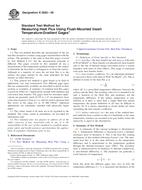
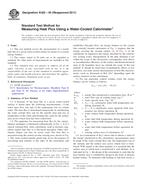 ASTM E422-05(2011)..
ASTM E422-05(2011)..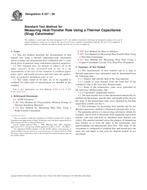 ASTM E457-08
ASTM E457-08 ASTM E458-08
ASTM E458-08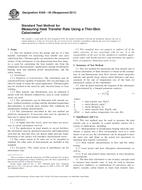 ASTM E459-05(2011)..
ASTM E459-05(2011)..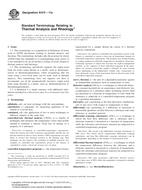 ASTM E473-11a
ASTM E473-11a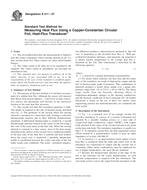 ASTM E511-07
ASTM E511-07
 Cookies
Cookies
